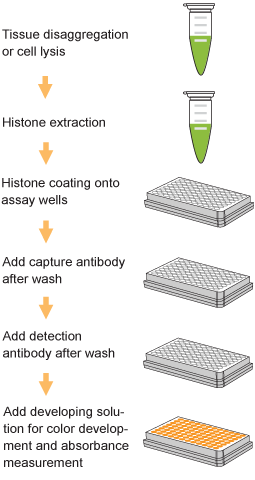Histone modifications, such as methylation, acetylation, phosphorylation, citrullination, and sumoylation, are epigenetic marks that regulate chromatin structure and gene expression by influencing DNA accessibility. These modifications are catalyzed by specialized histone-modifying enzymes, including histone acetyltransferases (HATs) and deacetylases (HDACs), histone methyltransferases (HMTs) and demethylases (HDMTs), which dynamically control transcriptional activation or repression.

Researchers study histone modifications to understand their roles in development, disease processes like cancer, and to explore potential epigenetic therapies.
Quantify levels of the most important H3 and H4 marks from histone extracts




 Cart (0)
Cart (0)






























